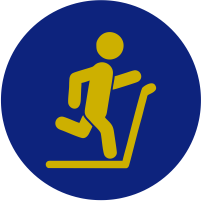Footwear Guide
Considerations
More than 43.1 million Americans—one in every seven persons—have trouble with their feet, mostly from improperly fitting shoes. A huge public health risk, foot problems cost the U.S. more than $3.5 billion a year.
We’re all susceptible to foot and ankle injuries, but we can reduce our risk for them by wearing properly fitting shoes that conform to the natural shape of our feet. In selecting shoes, keep this basic principle of good fit in mind: Your feet should never be forced to conform to the shape of a pair of shoes.
Although style is often a key consideration in choosing a pair of shoes, the most important quality to look for in shoes-from a practical standpoint-is durable construction that will protect your feet and keep them comfortable. Shoes that do not fit can cause bunions, corns, calluses, hammertoes and other disabling foot disorders.
Recommendations For Footwear
The American Academy of Orthopaedic Surgeons has developed tips to help people reduce their risk of foot problems.
- Have both feet measured every time you purchase shoes. Your foot size increases as you get older.
- Women should not wear a shoe with a heel higher than 2 1/4 inches.
- Try on new shoes at the end of the day. Your feet normally swell and become larger after standing or sitting during the day.
- Shoes should be fitted carefully to your heel as well as your toes.
- Try on both shoes.
- There should be 1/2-inch space from the end of your longest toe to the end of the shoe.
- Fit new shoes to your largest foot. Most people have one foot larger than the other.
- Walk around in the shoes to make sure they fit well and feel comfortable.
- Sizes vary among shoe brands and styles. Judge a shoe by how it fits on your foot not by the marked size.
- When the shoe is on your foot, you should be able to freely wiggle all of your toes.
- If the shoes feel too tight. don’t buy them. There is no such thing as a “break-in period.”
- Most high heeled-shoes have a pointed. narrow toe box that crowds the toes and forces them into an unnatural triangular shape. As heel height increases, the pressure under the ball of the foot may double, placing greater pressure on the forefoot as it is forced into the pointed toe box.
Our team is here for you
We offer the best, least invasive and least aggressive options to relieve your pain and symptoms so you can get back to the life you love. Atlantic Orthopaedic Specialists Sports Medicine Care Center has convenient locations in Virginia Beach, Norfolk and Chesapeake.



